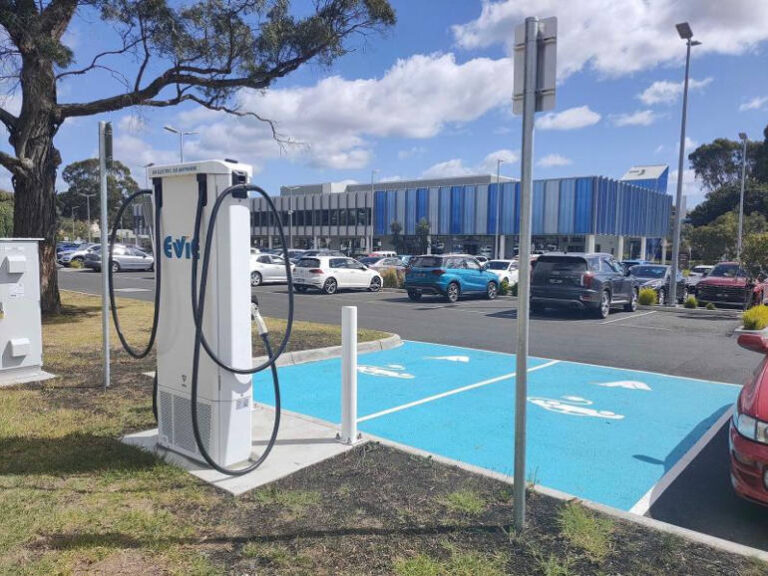It’s free if you’re using solar power. Otherwise, the cost per kilowatt hour (kWh) varies per state and is different for each electricity retailer.
Some households will pay more at peak times and less during the non-peak periods. So you’ll need to check your electricity bill to find the cost per kWh.
Once you have the cost per kWh, you can multiple it by the size of the battery in your EV. For example, a 70 kWh battery (@ $0.30 per kWh) will cost $21 to recharge.
If you want to use a public EV fast charger (i.e. 50 kW or higher), you’ll pay $0.50 kWh or more for the convenience of speed. The market is still evolving with limited competition so prices have remained stable. Though with more public charging sites being built each month, and more electric vehicles on the road, increased availability should generate some price competition to make it cheaper to charge faster.
One of the benefits of novated leasing is the savings from pre-tax payments. This means the $0.50 kWh being advertised as the price to charge isn’t want you’ll pay with a novated lease. It will be closer to $0.30 kWh which is a 40% saving. Why? The leasing provider will claim the GST (approximately $0.05) and then you’ll pay from pre-tax dollars which delivers the additional discount.
How much will you pay to travel 100 kilometres?
The electric vehicles on sale in Australia consume between 10-25 kWh/100km. The kWh/100km will decline over time as the next generation of electric vehicles become more efficient and require less power.
A small car will use less electricity than a large SUV, which is how it works for Internal Combustion Engine (ICE) vehicles today.
Here’s a comparison of the cost to travel 100 km in an electric Hyundai Kona compared to the petrol model.
| Vehicle | Consumption Rate | Cost per kWh/Litre | Cost to travel 100 kilometres |
| Hyundai Kona Petrol | 6.6 L/100km | $1.80 | $11.88 |
| Hyundai Kona EV | 14.3 kWh/100km | $0.30 | $4.29 |







